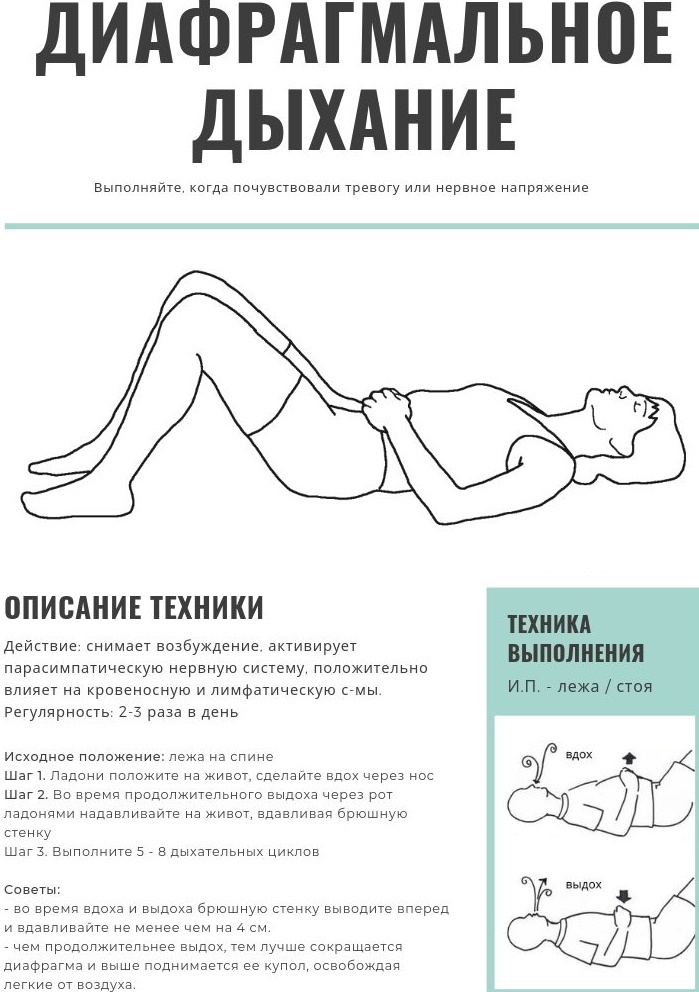Content
- Indications for the procedure
- Contraindications
- Examinations before surgery
- Training
- Making a model of the jaw apparatus
- Preoperative preparation of the dentition
- Operation step by step
- Recovery and rehabilitation after
- How long will the result last
- Advantages and disadvantages
- Possible complications
- Video about the operation to correct the bite
Jaw surgery to correct malformed bite is a radical method of dental therapy. This type of surgical treatment is prescribed to patients of the adult age group who have pronounced anomalies in the structure of the jaw apparatus.
The decision to use surgery is made based on the results of a comprehensive examination of the bone tissue of the patient's upper and lower jaw. The price of this method of treatment depends on the complexity of the clinical case, but on average it starts from 5000 rubles. for the procedure.
Indications for the procedure
Operation on the jaw to correct the bite is prescribed if all other dental methods for the formation of the anatomically correct position of the jaw did not bring the desired result. The price of a therapeutic procedure is determined on an individual basis based on the results of a comprehensive examination.
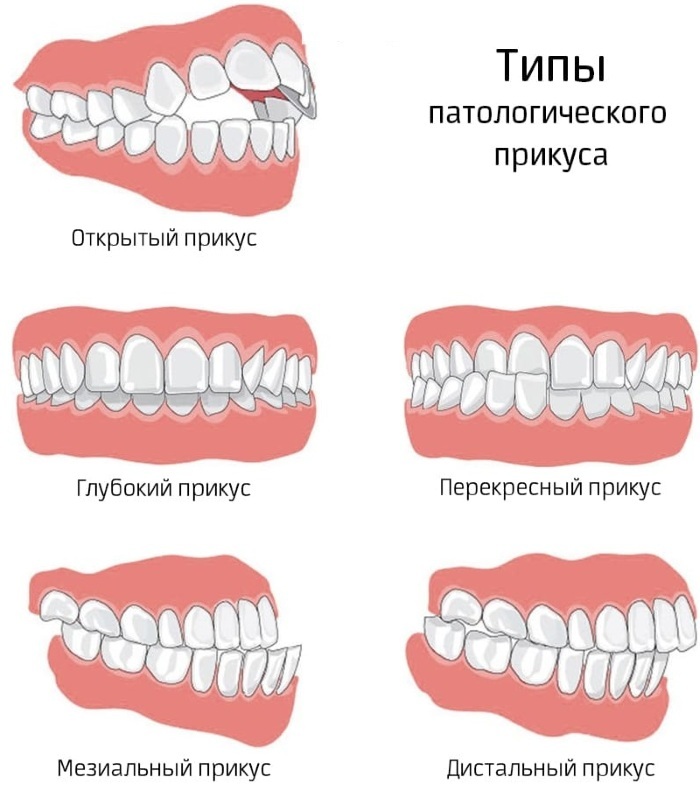
Surgical occlusion correction is indicated for the following cases:
- the presence of anatomical discrepancy between the size of the bones of the upper and lower jaw;
- pronounced problems with diction;
- difficulty swallowing or chewing food;
- periodic attacks of acute, as well as aching pain in the teeth, the appearance of which is associated with the presence of an incorrect bite;
- sinking or pronounced protrusion of the lower jaw;
- asymmetry of individual parts of the face;
- aesthetic defects;
- diseases of the jaw joints, which developed against the background of improper closing of the jaws;
- not closing the upper and lower lips.
Correction of a malocclusion is carried out by a maxillofacial surgeon. This method of therapy can be prescribed to a patient with any type of pathology. For example, with a distal, mesial or deep bite.
Contraindications
Operation on the jaw to correct the occlusion, the price of which depends on the complexity of the clinical case, is not a complicated dental procedure.
Despite this, this method of therapy has the following contraindications for its use:
- diabetes;
- hematological diseases associated with poor blood clotting;
- the presence of acute or chronic inflammation in any part of the body;
- a tendency to manifest acute allergic reactions to drugs that are used for local anesthesia;
- an infectious process inside the oral cavity (in this case, it will be necessary to perform treatment for diseased teeth, as well as remove destroyed molars);
- neurological and mental disorders.
The decision to perform a surgical operation is made jointly by the maxillofacial surgeon and the patient, who must independently overcome the psychological barriers associated with the fear of dental manipulations. Moreover, this type of therapy provides for a long period of rehabilitation.
Examinations before surgery
After the decision is made to carry out an operation to correct an incorrectly formed bite, the stage of diagnosis begins.
The patient needs to undergo the following types of hardware and laboratory examinations:
- donation of venous blood for the presence of infectious diseases;
- X-ray of the upper and lower jaw;
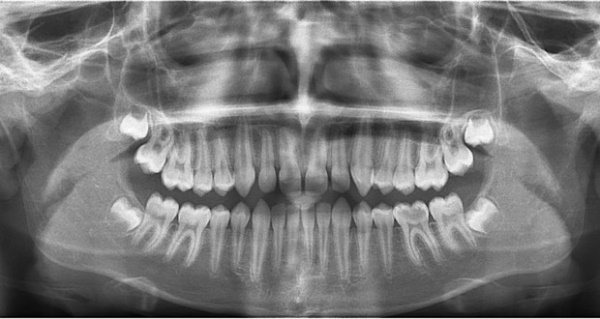
- collection of capillary blood for analysis for general indicators;
- delivery of morning urine for its biochemical study;
- MRI of the bones of the skull and face.
An obligatory item of preoperative diagnostics is an examination of the oral cavity by a dentist therapist. In case of detection of foci of an infectious process, signs of caries, as well as dental plaque, medical procedures are carried out. The cost of a comprehensive examination before surgical correction of the occlusion starts from 6900 rubles.
Training
Upon completion of the diagnostic study, the stage of orthodontic preparation begins, which is conventionally divided into 2 stages.
Making a model of the jaw apparatus
The orthodontist takes impressions of the patient's upper and lower jaw. With the help of high-tech equipment, 3-D modeling of the patient's future jaw apparatus is carried out, which will be formed based on the results of a successful operation. This sketch is an example for the formation of the correct bite at all stages of surgical treatment. Deviation from the set parameters is considered a violation of the therapeutic protocol.
Preoperative preparation of the dentition
Making a model of the patient's future jaw apparatus is only the initial stage of the preparatory procedure. In order for the surgical treatment of malocclusion to be successful, the orthodontist appoints the patient a date for the installation of the bracket system. The patient visits the dental clinic at a strictly appointed time.
At this stage of preparation, the doctor's task is to maximize the alignment of the patient's dentition, which has been disturbed by the wrong position of the jaws. The duration of wearing braces depends on the complexity of the clinical case. This can be from 6 to 18 months. During this stage of preparation, the patient regularly visits the orthodontist's office to adjust the braces. The schedule of dental procedures is drawn up by the attending physician.
Operation step by step
The operation on the jaw to correct the occlusion, the price of which is affordable for most working citizens, lasts at least 1 hour. In especially difficult cases, the duration of surgical procedures reaches 3-4 hours. The table below describes the step-by-step process for correcting malocclusion with maxillofacial surgery.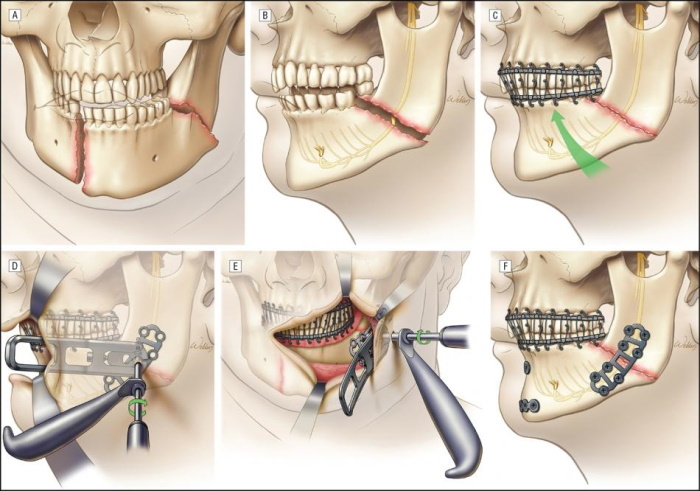
| Step-by-step operation | Description of the process of surgical procedures |
| Step 1. Effective pain relief | Surgical bite correction is a rather painful operation, which is performed under general anesthesia. The patient goes to the sterile conditions of the maxillofacial surgery room, where he lies down on the couch. The anesthesiologist injects the patient with a drug that immerses him in a state of deep medication sleep. |
| Step 2. Opening of the mucous membrane and soft tissues | After the anesthesia has worked, the surgeon uses a scalpel to expose the jawbone. |
| Step 3. Correct bone placement | The next stage of surgical therapy is the movement of the jaw bone tissue to the anatomically correct position. The main task of the doctor is to create a bite that corresponds to the sketch of 3-D modeling. |
| Step 4. Consolidation of the achieved result | The jaw bones displaced during the malocclusion correction process are fixed using surgical instruments in the form of screws, titanium plates and screws. Metal elements are additionally fastened with sealing rubber bands. |
| Step 5. Tire overlay | To prevent the displacement of the operated bones, a special splint is applied to the lower jaw, which limits its mobility. Due to this fixation, the process of restoring the operated area of the face will be faster, less painful, and also minimize the risk of postoperative complications. |
| Step 6. Removal from anesthesia | After completing all the surgical procedures, the anesthesiologist administers the drug to the patient, which neutralizes the effect of general anesthesia, awakens the centers of the brain from the state of medication sleep. |
Operation on the jaw to correct the malocclusion is carried out under the constant supervision of an anesthesiologist, orthodontist, as well as a maxillofacial surgeon. Upon completion of the surgical intervention, the patient is transferred to the intensive care unit for a day.
These precautions are aimed at ensuring that in the event of postoperative complications, the patient can receive qualified assistance from specialists as soon as possible. At the end of the day, the patient is transferred to the general therapy ward. The length of stay in the inpatient department of the Department of Maxillofacial Surgery depends on the complexity of the clinical case.
Recovery and rehabilitation after
Operation on the jaw to correct the occlusion, the price of which is formed by the management of the dental clinic, requires long-term rehabilitation of the patient.
Throughout the entire period of bone tissue restoration, the patient must comply with the following rules:
- Wear a splint installed on the surface of the lower jaw during the entire rehabilitation period.
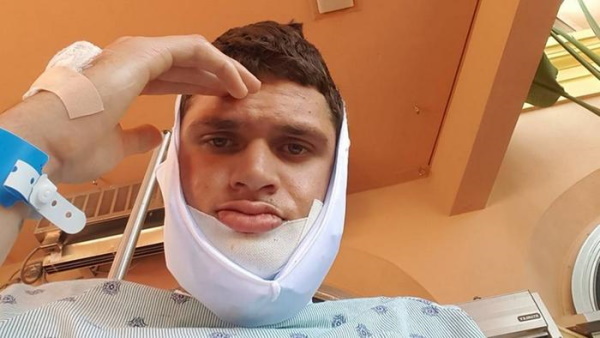
- Do not open your mouth wide.
- Do not blow your nose.
- Do not yawn, as this action reflexively leads to a wide opening of the mouth.
- Go to soft food, or even eat food that has been previously ground to a state of gruel.
- Take antibacterial drugs prescribed by your doctor regularly and without missing a beat. Medicines in this category will prevent the development of infectious osteomyelitis of bone tissue.
- Wear a tight sterile gauze bandage for the first 3-5 days after surgery.
- Undergo a daily examination by your dentist and orthodontist to monitor the ongoing changes that occur in the oral cavity at different stages of tissue healing.
After 2 to 3 weeks after the surgery, the doctor performs the removal of the stitches. In this case, the rehabilitation process continues for another 2-4 months. During this period of time, the patient is required to comply with the above rules, as well as regular visits to the attending physician. The schedule of examinations of the oral cavity is drawn up individually by the maxillofacial surgeon who performed the operation.
After 2-4 months. from the date of surgery, the removal of the fastening plates and screws is performed. Throughout the entire period of rehabilitation, the patient may experience periodic bouts of aching pain and discomfort in the area of the operated bone. This is a normal reaction of the body to this type of surgery.
How long will the result last
The result of surgical correction of malocclusion is preserved for the rest of your life.
Of course, if the operation was performed by qualified specialists without violating the protocol of the operation, and the patient himself followed all the rules of rehabilitation.
Eating too rough food, opening the mouth wide, refusing to take antibacterial therapy can lead to an inflammatory process, as well as mixing of the operated bones. In this case, it is possible to carry out repeated surgical treatment of the jaw bones and the absence of a positive result in correcting the occlusion.
Advantages and disadvantages
The operation to give the jaw anatomically correct position has its pros and cons.
The following advantages of this method of surgical therapy are distinguished:
- all manipulations of the maxillofacial surgeon are carried out under general anesthesia, which excludes the presence of psychological discomfort or the occurrence of pain;
- allows you to achieve a positive result in correcting an incorrectly formed bite, which will remain for the rest of your life;
- taking painkillers and antibacterial drugs minimizes the risk of pain and inflammation in the postoperative period;
- is the only effective method of forming a correct bite, when the use of all other methods has not brought a positive effect;
- differs in an absolutely affordable cost for the majority of citizens who have a stable average income;
- allows you to get rid of psychological complexes that have arisen due to the presence of an incorrectly formed bite (in in this case, internal self-esteem rises, the person again feels attractive and without such pronounced defects appearance);
- dissection of soft tissues and mucous membrane to expose the jaw bones is carried out inside the oral cavity, which eliminates the formation of scars and scars on the skin of the face.
 Most patients who have undergone surgery to correct malocclusion fulfilled all the recommendations of the attending physician for tissue restoration, were satisfied with the received result.
Most patients who have undergone surgery to correct malocclusion fulfilled all the recommendations of the attending physician for tissue restoration, were satisfied with the received result.
Despite this, this method of treatment has the following disadvantages:
- during surgery, injury to the jaw bone tissue is performed;
- in the first 5-10 days after the operation, the soft tissues of the patient's face retain pronounced swelling, cyanosis, there are multiple bruises;
- this type of surgical treatment is carried out under the influence of general anesthesia, which means that a negative load is created on the cardiovascular system and the centers of the brain;
- there is always a risk of infection of bone tissue with bacterial microorganisms, which entails the development of osteomyelitis of the jaw, accompanied by acute or chronic inflammation;
- a long period of rehabilitation, the duration of which is from 2 to 4 months. (this is provided that the restoration of the operated bone site takes place as planned without complications);
- restrictions on the use of fibrous and rough food, which creates an additional load on the bone tissue of the jaw (meat, cabbage, bread, bacon, nuts, chocolate, apples, pears, radishes, cucumbers);
- the need for prolonged wearing of a splint that fixes the lower part of the facial bones;
- removal of screws and metal plates that fasten the operated area of the bone, provides for a second surgical intervention to remove the installed structures;
- throughout the entire period of rehabilitation, pain persists, which are of a short-term and aching nature;
- to prevent the development of infectious microflora, it is necessary to take potent antibacterial drugs that prevent the occurrence of osteomyelitis, but at the same time cause intestinal dysbiosis, reduce the protective functions of the immune systems.
The main disadvantages and risks of a surgical operation to correct the occlusion are explained by the maxillofacial surgeon and the orthodontist to all patients. Each patient is aware that this method of treatment has not only advantages, but also certain disadvantages.
Possible complications
Patients who have undergone bite correction surgery may face the following complications:
- displacement of the operated jaw bones;
- the development of acute or chronic inflammation;
- infection of bone tissue with bacterial microorganisms;
- improper bite formation, as well as the need for a second operation to correct mistakes.
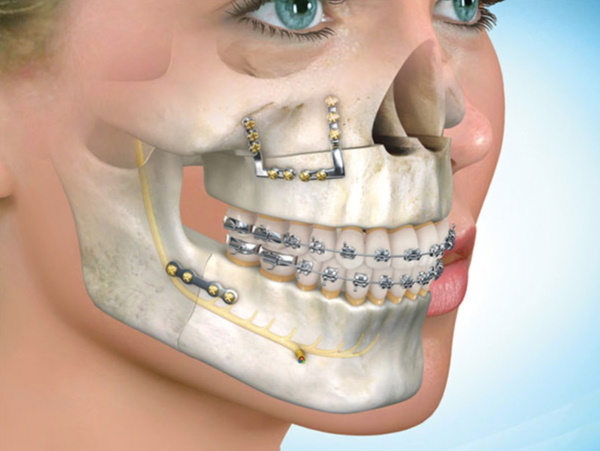
To minimize the risk of the above consequences, it is necessary to choose a medical institution where the operation is performed qualified specialists with extensive practical experience, sterility standards are observed, all the necessary material and technical base.
Jaw surgery to correct malocclusion is performed under general anesthesia. This method of dental treatment is used only in extreme cases, when other methods of aligning the jaw apparatus have not brought a positive effect. Before the appointment of the date of surgery, the patient undergoes a comprehensive examination of the body, X-ray, MRI and 3-D modeling of the bones of the face and skull.
Correction of malocclusion begins with wearing a bracket system that aligns the dentition, and also prepares the jaw apparatus for surgical procedures. The price of this operation is determined individually by the orthodontist, depending on the type and complexity of the malocclusion.
Video about the operation to correct the bite
Orthognathic surgery - before and after:



